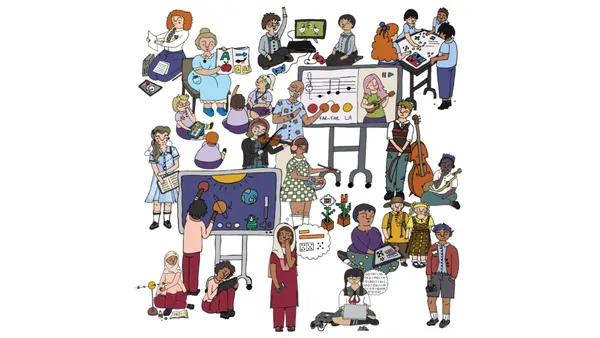Dive Brief:
- Third-graders at Grafflin Elementary School in Chappaqua, NY, were given the opportunity to present proposals on how to improve their classrooms to their peers, administrators and Chappaqua School Foundation members as part of a class unit on persuasiveness, Chappaqua high school students Hannah Fenlon and Henry Asa, who also serve on the foundation's grant-focused Student Advisory Committee, write for EdSurge.
- For inspiration on the proposals — which included activity rooms and bean bag chairs — the students watched a "Grant Shark Tank" event from Horace Greeley High School, which teachers said inspired them to take their writing "to a different level."
- Fenlon and Asa write that the school foundation's Student Advisory Committee has over 50 student members who are given the opportunity to provide feedback on grants to better ensure the foundation finances efforts outside of the standard school budget that are innovative and impactful.
Dive Insight:
As traditional blue collar jobs are disrupted by automation, artificial intelligence and outsourcing, schools rethinking classroom design to keep up with shifts in the economy. Employers now want graduates entering the workforce who are prepared to collaborate and work in a more open environment that requires less dependence on rote processes and more creative and critical thinking.
But before any heavy investment is made, administrators should ensure the changes are in line with what students will actually use. As Robert Dillon, the director of innovative learning for the School District of University City (MO) and the co-author of "The Space: A Guide for Educators," told attendees at this year's Future of Education Technology Conference in January, achieving this will require educators to develop a "designer mindset." In doing so, they can more effectively address the hundreds of "micro-decisions" involved in finding the choices students would love to make and that they feel would help their learning.
This will, of course, require school administrators to solicit student input and test how they interact with limited amounts of new furniture items before making broader purchases. Finding solutions that fit within budgets and considering variances in spaces based on needs and subjects can also present a challenge. But ultimately, involving students in the process can give them a higher degree of investment in their learning while also improving their confidence because their ideas are valued and considered by their educators in the first place, even if they aren't ultimately implemented.






 Dive Awards
Dive Awards








